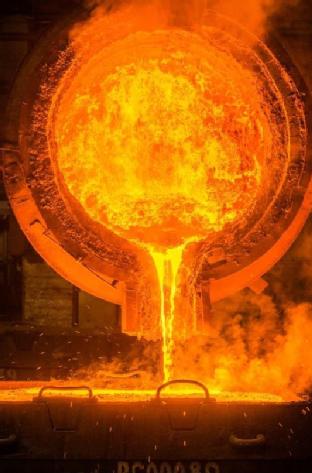WMG Insights
Industrial waste heat recovery – an opportunity
Dr Russell Hall, Assistant Professor
Manufacturing processes require and generate heat. Heat is energy, so if heat is wasted, energy is wasted, and every joule of lost energy is a setback as we target net-zero carbon manufacturing.
 Manufacturing processes use heat for many different reasons – heat can transform material properties, it can joins different materials and enable materials to change physical form. Processes such as melting, annealing, forging, drying, baking, aging, engine testing, evaporation, firing and sterilisation all require heat of different magnitudes. In each of these processes heat is allowed to escape, sometimes deliberately as it would be for a piece of cooling steel after heat treatment, or incidentally as when an oven is opened or vented. Imagine being able to capture all the heat that is allowed to escape: just how much energy do you think that would be?
Manufacturing processes use heat for many different reasons – heat can transform material properties, it can joins different materials and enable materials to change physical form. Processes such as melting, annealing, forging, drying, baking, aging, engine testing, evaporation, firing and sterilisation all require heat of different magnitudes. In each of these processes heat is allowed to escape, sometimes deliberately as it would be for a piece of cooling steel after heat treatment, or incidentally as when an oven is opened or vented. Imagine being able to capture all the heat that is allowed to escape: just how much energy do you think that would be?
With the target of net-zero by 2050, manufacturers and academics alike are starting to look at the subject of wasted heat. Different studies have been undertaken to show how much heat is available from industry for recovery, and estimates vary from 24 TWh/year to 40 TWh/year. To give that some context, according to UK Power the average home on uses about 4200 kWh/year of electricity. 24 TWh/year is more than enough energy needed to power all the homes in London each year. It is clear that waste heat presents a significant opportunity as an energy source.
Of course, it’s not that simple. Converting heat to electricity isn’t all that efficient and it can be expensive. We need to think about using heat in different ways, if there isn’t enough heat for cost effective conversion into electricity then what else can we do with it?
Diversion or capture of waste heat for secondary uses might prove to be the most effective way for manufacturers to manage waste heat and use it as a resource to lower operating costs and CO2e emissions. Waste heat from a primary heat use, kilns and furnaces for example, can be used for a secondary purpose – preheating products, heating water or office spaces. If heat storage is included, the options of what heat can be reused for become much more varied. Storage and release of waste heat makes preheating of furnaces and kilns possible, and this sort of preheating makes a lot of sense. Heating a furnace from a starting point of 100oC as opposed to room temperature will save time, energy and ultimately money.
Waste heat isn’t just an opportunity for heavy energy using manufacturers, like steel mills or mass glass production, SMEs can also benefit from capturing and reusing waste heat. WMG completed a series of heat surveys for SMEs and found that there were opportunities for each company to reuse or reclaim heat that resulted from their processes. WMG has started working with some of the SMEs to identify inexpensive ways to use heat wasted from their respective processes for secondary purposes. As an example, we are working with a ceramics manufacturer in Stoke-on-Trent to use the heat from their kiln flues to heat water for their offices, supplementing or replacing their water boilers.
Beyond reuse of waste heat within individual companies, sharing wasted heat from a process in company A to a process in company B is a real opportunity for manufacturers near each other to become more efficient. High temperature processes can feed lower temperature processes in a cascade of heat. For instance, a steel plant’s waste heat could be used by a glass manufacturer, and then the glass manufacturer’s heat could be used by a food company. Of course, there are challenges to this, steel and glass manufacturers are not typically located next to each other, but for future industrial planning sharing of energy resources like waste heat will be essential.
Efficient use of energy resources like waste heat doesn’t have to be complicated but it might require creative thinking and WMG is here to help. Most sources of heat can be useful, so if you’ve got this far and you’re interested in knowing more, please get in touch, we’d love to help you make your company more efficient and sustainable, to share our knowledge and help make UK manufacturing stronger.
GET IN TOUCH WITH US:
If you would like to find out more about the opportunities, our research or get in touch with the author, please contact wmgbusiness@warwick.ac.uk
